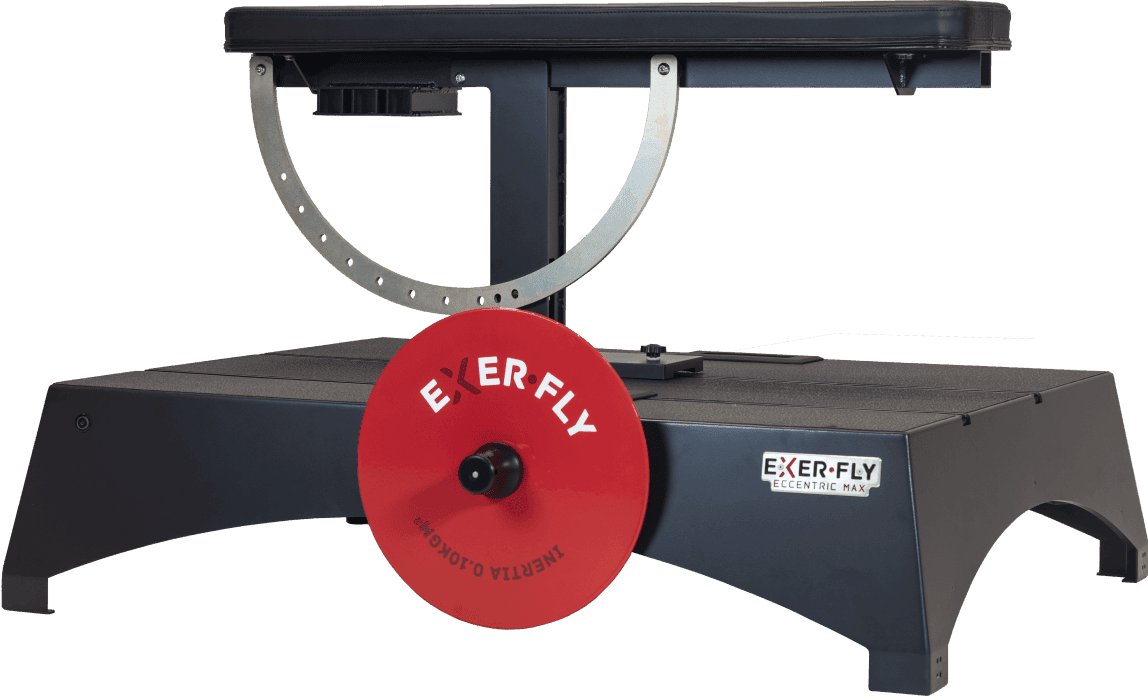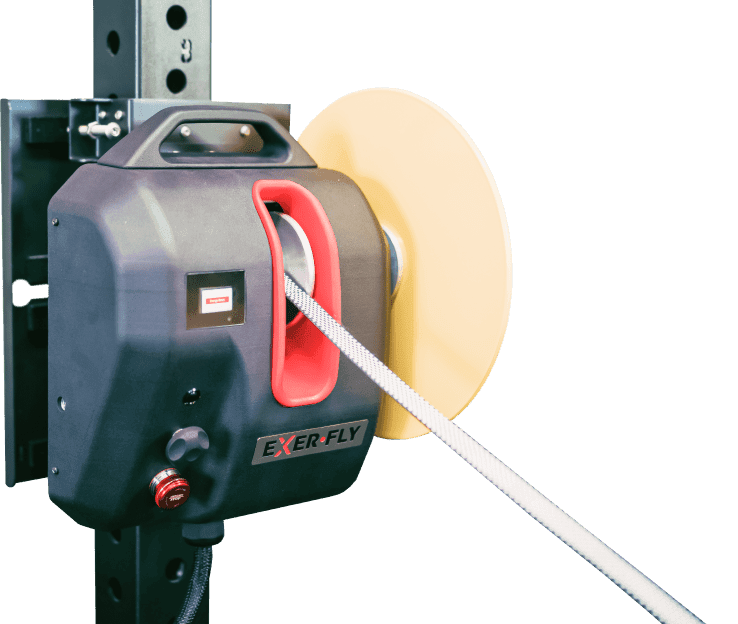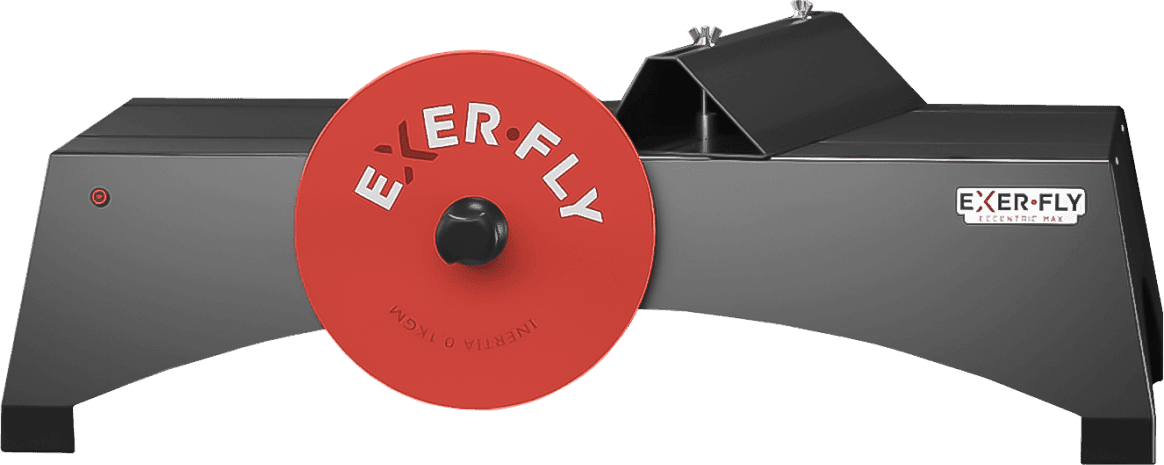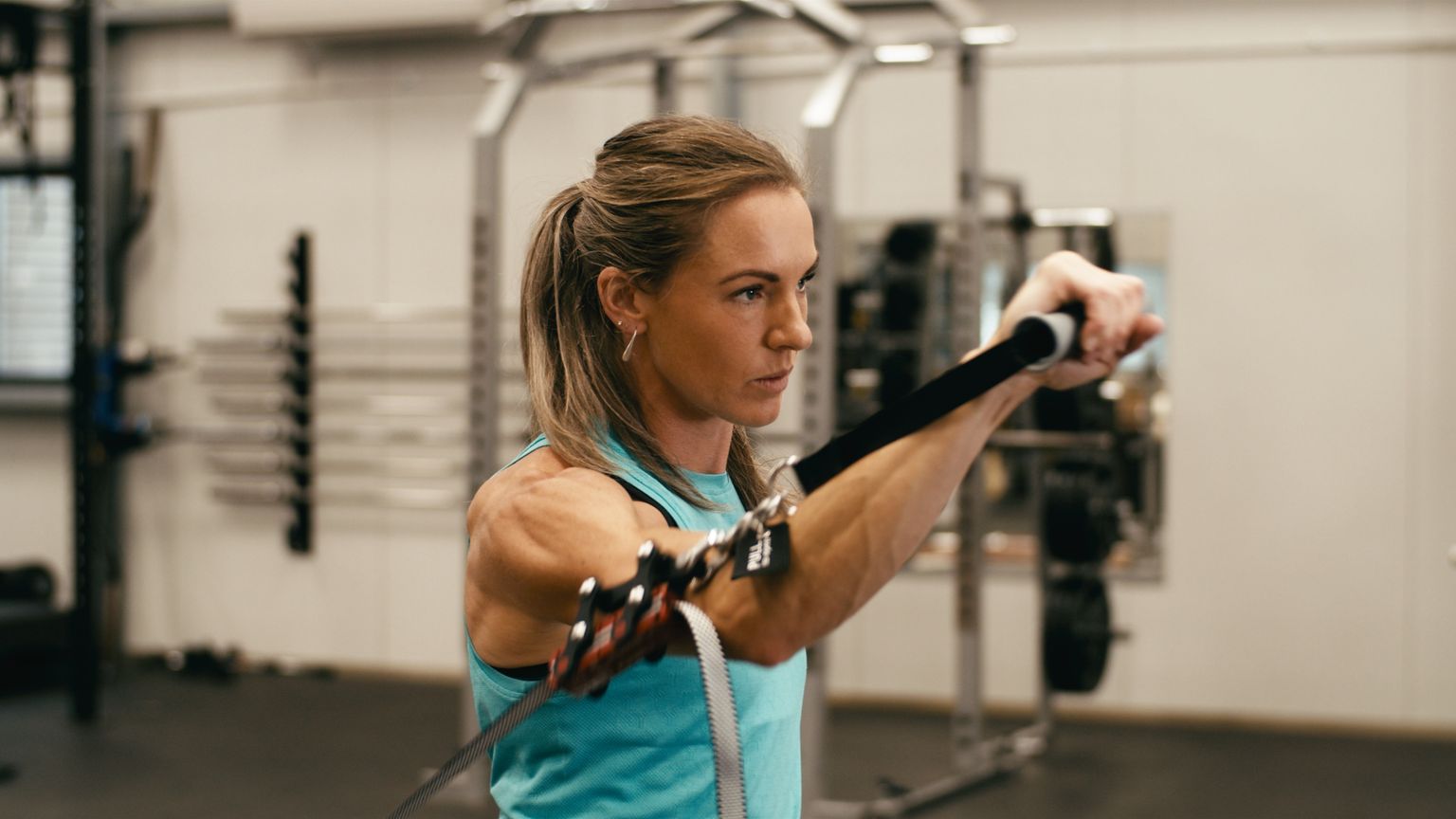
Flywheel vs Traditional Training
You’ve probably heard a trainer speak of flywheel training or seen it mentioned in an article somewhere, but what actually is flywheel training, and is it better than using conventional weights? The pandemic has impacted the face of every single business, including the fitness industry, so we’re now left with the challenge of staying fit in a world that's going in and out of lockdown. Below are some key findings from scientific studies and a cross-analysis of articles that tackle the debate of flywheels vs. weights.
What is Flywheel Training?
Flywheel training is done on a piece of equipment containing a flywheel, where an individual uses their force to accelerate and decelerate the flywheel. There is constant resistance in both the pull and return movement of the workout, created by the flywheel, allowing for the continuous load and stimulation of the muscles in both the concentric and eccentric phase.
- Concentric phase: Muscle Shortening
- Eccentric phase: Muscle Lengthening
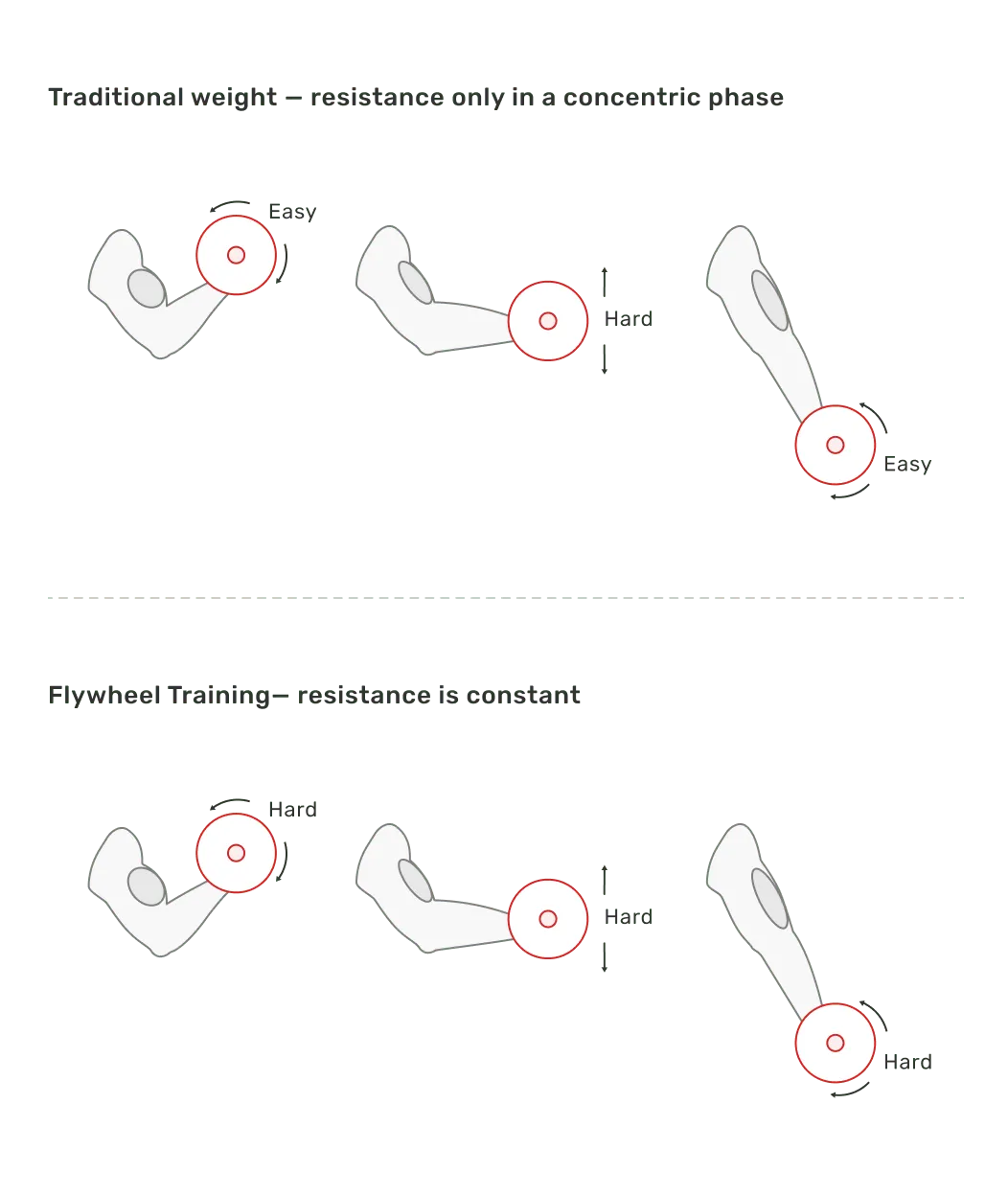
With traditional weights, the weight is static, so resistance is only felt in the concentric phase. Take a bicep curl, for example. Typically, you pull a weight from your thigh to your chest in a circular motion, experiencing resistance as the weight comes up towards you. Once the weight has passed 90 degrees, the resistance shifts and you are pushing the weight against gravity, which often leads to suboptimal form, as the body adjusts to the changing resistance. When lowering the weight, you’re no longer pulling against gravity, so there is less resistance and it feels much easier.
With Flywheel training, resistance is felt on the way up and the way day, stimulating the eccentric phase of movement. When engaging in flywheel training, the individual uses their force to spin the flywheel, then to slow the flywheel’s momentum. When pulling the flywheel, it pulls back with the same force, allowing users to control resistance through the modification of the flywheel inertia and the force production of the users.
Leading Flywheel equipment such as Exerfly give users the option to train supramaximally, using eccentric overload. Eccentric overload is when a motor is used to provide more energy to the flywheel speed in the eccentric phase of a movement. The energy boosted through the flywheel in the eccentric phase is based on how much energy the user is producing during the concentric phase. For example, if an Exerfly user sets their eccentric overload boost to 20%, the flywheel will be given 20% more energy in the eccentric phase of a movement than it had in the concentric phase. The flywheel will spin faster and the user will get an eccentric overload.
Why is it becoming so popular?
As mentioned previously, the flywheel training trend was first set by elite sports teams circles by the likes of NFL and NBA coaches who saw its potential in muscle gain and preventing injuries. Flywheel training has long been established as the key to stimulating eccentric movements, which results in better performance in both concentric and eccentric force for athletes. Athletes often struggle to maintain perfect form when training with weights, as they are dealing with unusually high forceloads at a slow speed. With flywheels, they can withstand high forceloads, using less weight, and at a faster speed. Coaches can load an Exerfly with up to 45kgs/99lbs, to produce an unlimited amount of forceload. Furthermore, the constant load of resistance enhances the strengthening of the muscle, preventing the occurrence of serious sporting grievances such as tendinopathies and musculoskeletal injuries.
Flywheel training has also been popular among gym owners, personal trainers and fitness coaches because of its ability to generate investment for the buyer. Making an investment in an equipment like Exerfly means gym owners can rent them out to customers either wanting to try out the latest equipment technology, or those unable to commute as often to their facilities. For personal trainers, they are able to rent out their equipment to their clients, and game-changing features such as the in-built sensor and app in Exerfly equipment means that they can also track their clients performance remotely. Similarly, these features also allow fitness coaches to connect with Exerfly users around the world and create and distribute customisable workout plans and programmes and distribute, diversifying their area of influence and generating another source of income.
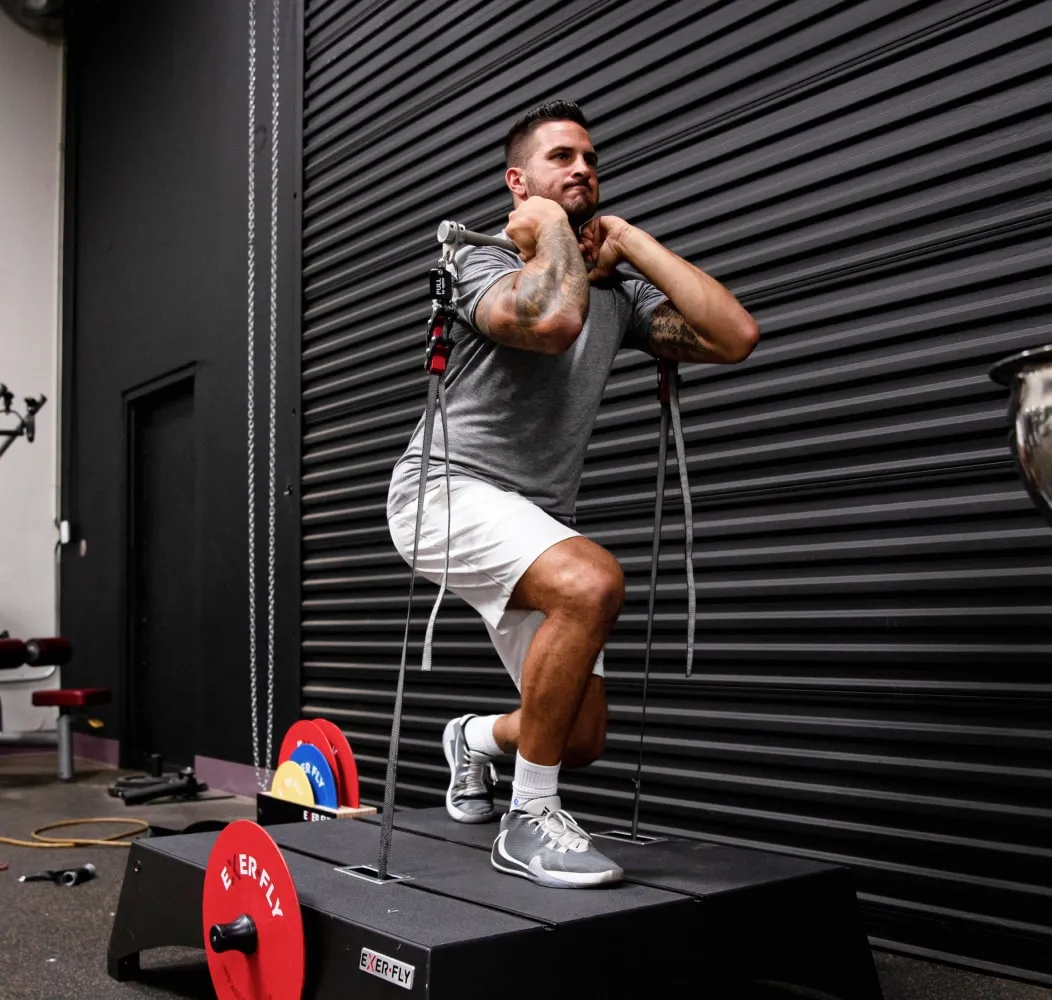
However, flywheel training has also taken up the world by storm outside of sports and coaching professionals because of its value to individuals looking to take the next step in their fitness journey whilst cutting costs. Weight lifting can be quite intimidating for non-professionals, as it requires perfect technique in order to avoid serious injuries, and often results in painful muscle aches after a full-on workout. Flywheel training users save time and money from cutting off their gym memberships and buying an all-in-one training solution that they can set up easily at home and packed up swiftly when travelling. These features spark the interests of all sorts of individuals, ranging from bustling businessmen looking for something convenient and practical to take with them on work trips, from busy moms wanting to fit in a good workout within their hectic schedule.
Another aspect in which flywheel training trumps conventional weight training is in safety. Professionals and home users are at high risk alike of sustaining injuries when lifting weights, as these require perfect technique and form in order to prevent serious damage from happening. With the Exerfly, the forceloads are only produced by the power of the user, meaning that if someone can’t produce any more force and stops training, the flywheel won’t move. There is no risk of equipment crashing down as you can drop the bar or handles and it won’t fall on you. Exerfly users are able to lift heavier forceloads without risk of injury from excessive overloading or heavy weights falling on them.
Scientific Studies
There have been extensive studies on the benefits of flywheel training over the years. It has been established as an effective method for improving several aspects of strength and power with importance for sports performance, such as hypertrophy and endurance. Research also points to eccentric resistance training as being beneficial for untrained populations as well as sports athletes. It has been regularly cited as playing a strong role in injury prevention, due to its advantages in strengthening both concentric and eccentric contraction. Research points to eccentric exercise as becoming pivotal in rehabilitation and physiotherapy, with evidence supporting its use in the treatment of tendinopathies, muscle strains and ACL injuries.
Eccentric overload training has been highly favoured against traditional free weights as they have resulted in greater improvements in both eccentric and concentric force, muscle power and muscle hypertrophy in healthy subjects. It has been proven to leads to faster muscle adaptations in trained athletes, better suiting them for fast, explosive movements. Eccentric overload training has been seen to show promising results in rehabilitation, concretely in treating tendinopathies.

Products
Flywheel training has long been a hot topic amongst high-level athletes and trainers, but has rapidly caught the attention of the home user market since the pandemic. Competitive and recreational consumers alike praise the practicality of flywheel training in regards of convenience, value and safety compared to traditional weights.
On the Run- Exerfly Portable
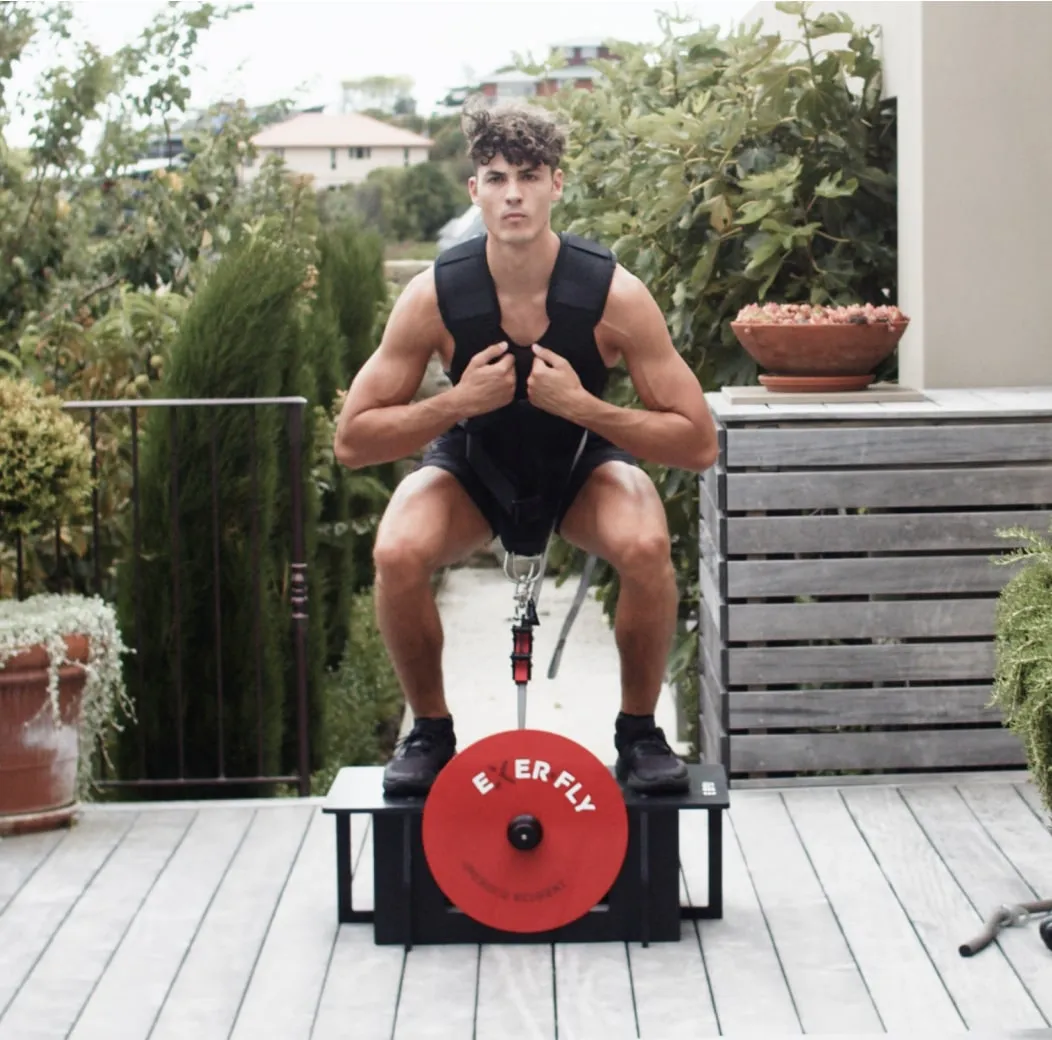
The Exerfly Portable is a lightweight and robust piece of equipment, offering the ultimate flexibility, portability, and convenience. Ideal for travelling athletes, home-users, sports teams, and physiotherapists, the Portable offers a compact training solution without compromising on quality. The Exerfly Portable also features a removable top that can be attached to any vertical structure to train lateral and rotational movements, and an optional sensor that monitors your performance in real-time.

A Powerful Punch- Exerfly Rack Mount
The Exerfly Rack Mount is the perfect tool for training horizontal and rotational movements. Easily attached to any squat rack, the Rack-Mount is especially beneficial for shoulder, arms, or torso exercises that involve twisting or rotational movements. With the optional Rack-Mount Slider, you can quickly slide the Rack-Mount up and down the squat rack for less time between exercises and more time under tension.

The Ultimate Setup- Exerfly Platform
The Exerfly Platform is a stable, multi-use flywheel training platform built for everything from heavy-duty workouts to rehabilitation, with a unique Platform Bench and Double-Pulley system for added versatility. Versatile and efficient, the Platform allows users to perform an endless range of exercises in a compact space. From elite athletes and sports teams to rehabilitation clients, the Exerfly Platform is truly an all-around, one-stop solution.
Keeping one step ahead- Motorized Technology
Featuring industry-leading motorized technology, Exerfly allows athletes to push themselves to new levels, which are almost impossible to achieve otherwise. Now, athletes can add a resistance boost of up to 80% in the eccentric phase of a movement, allowing users to achieve greater eccentric overload for even better results in both the concentric and eccentric phase.
Summary
We have a clear winner here. With flywheel training, say goodbye to purchasing pricey individual weights that are a nightmare for storage and travel. Flywheel training provides a practical solution for users wanting a innovative gym solution without actually having to lock into a gym lengthy membership. For athletes, flywheel training provides the opportunity to stimulate both the concentric and eccentric phase of movements, resulting in increased performance, muscle gain, muscle hypertrophy and injury prevention. For home users, this is the chance to elevate your workouts with an all in one training solution. Save time commuting from the gym and back, customize your Exerfly equipment to target what you want to train specifically and bring your friends over to show off your personal gym! The possibilities are endless. But don’t just take our word for it, check out what these leading athletes and trainers think of flywheel training:
Chris Chase, Director of Performance for Memphis Grizzlies
“ The versatility of the Exerfly Platform is unmatched by any other piece of flywheel equipment on the market. Firstly, being able to use 1 or 2 straps is a huge advantage. Unlike other equipment with 1 strap , the Platform can be better set up for things like deadlifts with 2 separate handles or a shoulders elevated hip bridge with a straight bar. This has allowed us to utilize the flywheel stress with most of our exercises.”
Tom Whittaker, Performance Director and Head Coach at Para Powerlifting and British Weight Lifting
“Having used Exerfly equipment for several months I have been delighted with the quality and functionality across able bodied and disabled groups. We have used Exerfly primarily to support muscle mass development in addition to traditional free weight modalities where muscle length and passive muscle element adaptations have been desirable for well rounded muscle volume change.”
Andre Mattson, Head Performance Coach for the Santa Cruz Warriors, Former Strength & Conditioning Coach for the Charlotte Hornets and the New York Knicks, Former Coach at Velocity Sports Performance
“Exerfly's eccentric motor is a game changer. When my athletes initially use it, they feel so engaged, they feel drastic differences. Where else in the weight room are you able to reach these eccentric forces at these velocities? I can use free weights, I can use cables, but I cannot reciprocate that environment that you create in the sport. Nothing mimics sport directly like Exerfly can.”

